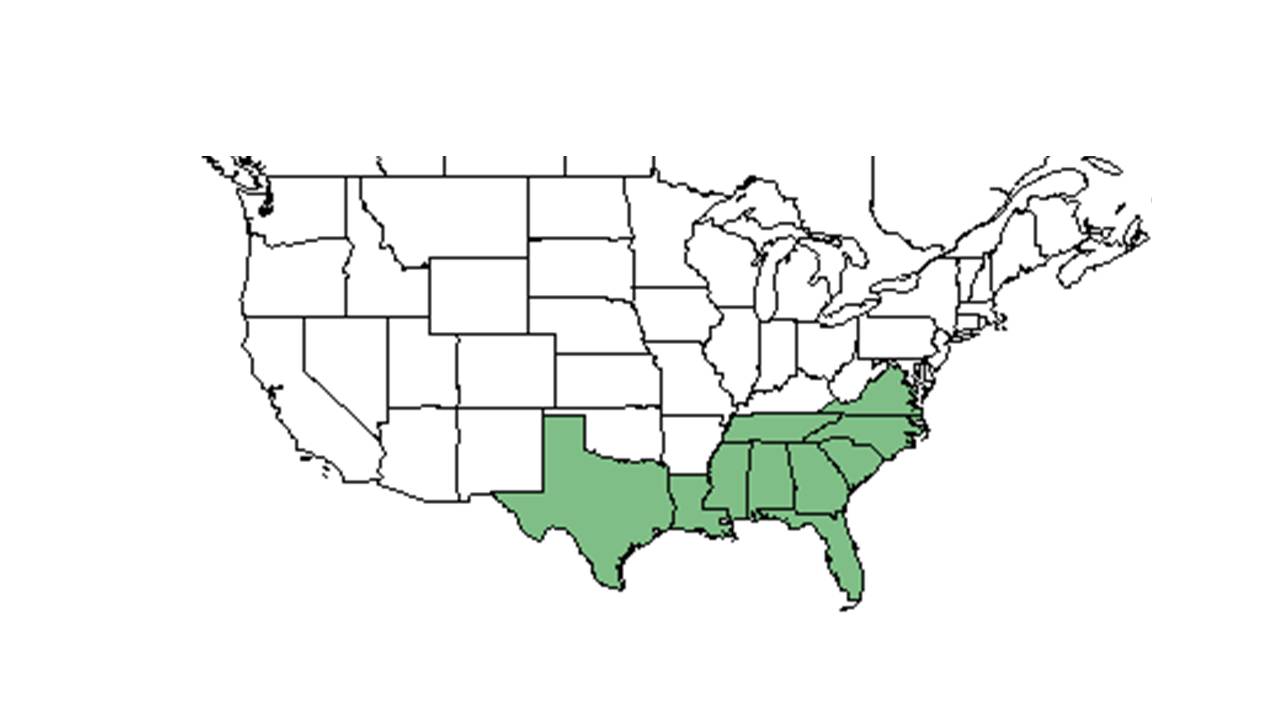Difference between revisions of "Dichanthelium strigosum"
(Created page with "{{italic title}} <!-- Get the taxonomy information from the NRCS Plants database --> {{taxobox | name = Dichanthelium strigosum | image = Insert.jpg | image_caption = | regnu...") |
|||
| Line 22: | Line 22: | ||
==Ecology== | ==Ecology== | ||
===Habitat=== <!--Natural communities, human disturbed habitats, topography, hydrology, soils, light, fire regime requirements for removal of competition, etc.--> | ===Habitat=== <!--Natural communities, human disturbed habitats, topography, hydrology, soils, light, fire regime requirements for removal of competition, etc.--> | ||
| + | It can be found in relatively undisturbed areas.<ref>Thaxton, J. M. (2003). Effects of fire intensity on groundcover shrubs in a frequently burned longleaf pine savanna. Ann Arbor, MI, Louisiana State University and Agricultural & Mechanical College. Ph.D.: 146. Kirkman, L. K., K. L. Coffey, et al. (2004). "Ground cover recovery patterns and life-history traits: implications for restoration obstacles and opportunities in a species-rich savanna." Journal of Ecology 92(3): 409-421.</ref> It can be found in longleaf pine savannas.<ref name="Thaxton 2003"/> | ||
===Phenology=== <!--Timing off flowering, fruiting, seed dispersal, and environmental triggers. Cite PanFlora website if appropriate: http://www.gilnelson.com/PanFlora/ --> | ===Phenology=== <!--Timing off flowering, fruiting, seed dispersal, and environmental triggers. Cite PanFlora website if appropriate: http://www.gilnelson.com/PanFlora/ --> | ||
===Seed dispersal=== | ===Seed dispersal=== | ||
| + | It is dispersed by gravity.<ref name="Kirkman et al 2004">Kirkman, L. K., K. L. Coffey, et al. (2004). "Ground cover recovery patterns and life-history traits: implications for restoration obstacles and opportunities in a species-rich savanna." Journal of Ecology 92(3): 409-421.</ref> | ||
===Seed bank and germination=== | ===Seed bank and germination=== | ||
===Fire ecology=== <!--Fire tolerance, fire dependence, adaptive fire responses--> | ===Fire ecology=== <!--Fire tolerance, fire dependence, adaptive fire responses--> | ||
| + | It can tolerate biennial, early growing season prescribed fires.<ref name="Thaxton 2003">Thaxton, J. M. (2003). Effects of fire intensity on groundcover shrubs in a frequently burned longleaf pine savanna. Ann Arbor, MI, Louisiana State University and Agricultural & Mechanical College. Ph.D.: 146.</ref> | ||
===Pollination=== | ===Pollination=== | ||
===Use by animals=== <!--Herbivory, granivory, insect hosting, etc.--> | ===Use by animals=== <!--Herbivory, granivory, insect hosting, etc.--> | ||
Revision as of 15:13, 10 June 2015
| Dichanthelium strigosum | |
|---|---|

| |
| Scientific classification | |
| Kingdom: | Plantae |
| Division: | Magnoliophyta - Flowering plants |
| Class: | Liliopsida – Monocotyledons |
| Order: | Cyperales |
| Family: | Poaceae ⁄ Gramineae |
| Genus: | Dichanthelium |
| Species: | D. strigosum |
| Binomial name | |
| Dichanthelium strigosum (Muhl. ex Elliott) Freckmann | |

| |
| Natural range of Dichanthelium strigosum from USDA NRCS Plants Database. | |
Contents
Description
Distribution
Ecology
Habitat
It can be found in relatively undisturbed areas.[1] It can be found in longleaf pine savannas.[2]
Phenology
Seed dispersal
It is dispersed by gravity.[3]
Seed bank and germination
Fire ecology
It can tolerate biennial, early growing season prescribed fires.[2]
Pollination
Use by animals
Diseases and parasites
Conservation and Management
Cultivation and restoration
References and notes
Photo Gallery
- ↑ Thaxton, J. M. (2003). Effects of fire intensity on groundcover shrubs in a frequently burned longleaf pine savanna. Ann Arbor, MI, Louisiana State University and Agricultural & Mechanical College. Ph.D.: 146. Kirkman, L. K., K. L. Coffey, et al. (2004). "Ground cover recovery patterns and life-history traits: implications for restoration obstacles and opportunities in a species-rich savanna." Journal of Ecology 92(3): 409-421.
- ↑ 2.0 2.1 Thaxton, J. M. (2003). Effects of fire intensity on groundcover shrubs in a frequently burned longleaf pine savanna. Ann Arbor, MI, Louisiana State University and Agricultural & Mechanical College. Ph.D.: 146.
- ↑ Kirkman, L. K., K. L. Coffey, et al. (2004). "Ground cover recovery patterns and life-history traits: implications for restoration obstacles and opportunities in a species-rich savanna." Journal of Ecology 92(3): 409-421.